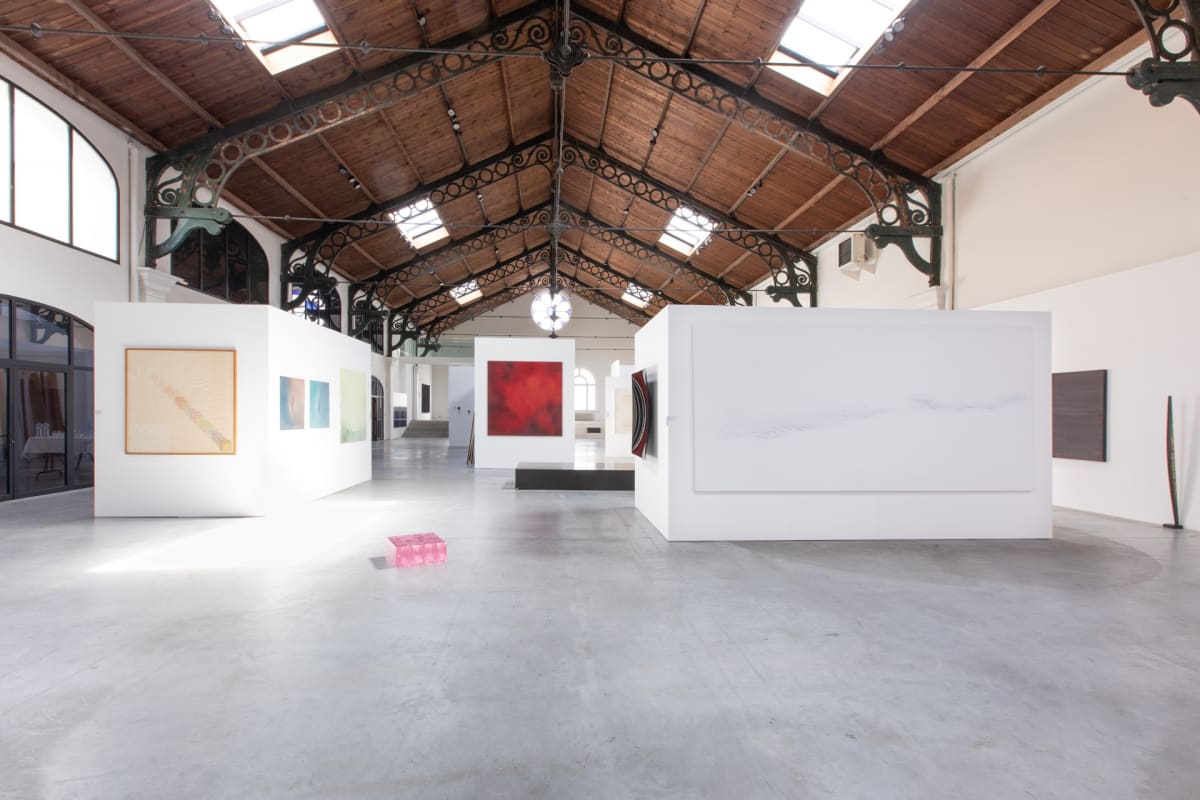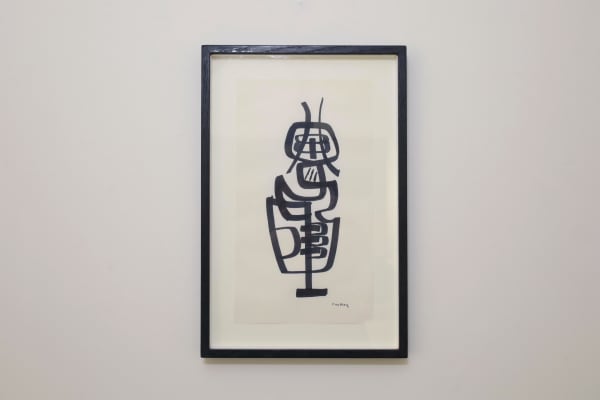FRANCINE HOLLEY Belgium, 1919-2020
Overview
Francine Holley was born in 1919 in Liège and died in 2020 in Paris. From 1937 to 1945, she simultaneously initiated herself to music (first prize for piano at the Conservatory of Liège) and visual arts at the Fine Art Academy of Liège.
In 1946, Francine Holley moved to Paris and attended the studio of André Lhote and Fernand Léger, then those of Jean Dewasne and Edgar Pillet, which naturally led her to realize her first abstract works around 1950. From 1955 Holley’s works became more complex; lines grew, and forms became thicker. The artist also diversifies her techniques, adding gouache, collage, pastels, and inks to her practice. This technical evolution opens up new pictorial possibilities. She will be part of the Abstract Art, Built Art and Forms movements. In search of a flexible and dynamic geometry on strictly flat backgrounds, the artist evokes, especially from the 1980s, the rhythmic of musical staves, Arabic calligraphy, or some Africanist signs. The austerity of the structure in monumental and hieratic frames that survey the entire work encourages the artist to practice luminous chromatism.
In 1990, the Fine Art Museum of Verviers dedicated a retrospective to Francine Holley. She exhibited in 1995 et the Art and History Museum of Meudon. For her 90 years, a new retrospective is dedicated to her by the Magritte Museum in Brussels (2010). For her 100th anniversary, the exhibition “From Mother to Daughter, Three Generations of Artists, Francine Holley, Kitty Holley, Alice Sfintesco” is presented.
"I quickly understood that abstraction should not bring me into a system but instead gave me the full freedom to do what I felt and thought." – MU-inthecity, Muriel de Crayencour
In 1946, Francine Holley moved to Paris and attended the studio of André Lhote and Fernand Léger, then those of Jean Dewasne and Edgar Pillet, which naturally led her to realize her first abstract works around 1950. From 1955 Holley’s works became more complex; lines grew, and forms became thicker. The artist also diversifies her techniques, adding gouache, collage, pastels, and inks to her practice. This technical evolution opens up new pictorial possibilities. She will be part of the Abstract Art, Built Art and Forms movements. In search of a flexible and dynamic geometry on strictly flat backgrounds, the artist evokes, especially from the 1980s, the rhythmic of musical staves, Arabic calligraphy, or some Africanist signs. The austerity of the structure in monumental and hieratic frames that survey the entire work encourages the artist to practice luminous chromatism.
In 1990, the Fine Art Museum of Verviers dedicated a retrospective to Francine Holley. She exhibited in 1995 et the Art and History Museum of Meudon. For her 90 years, a new retrospective is dedicated to her by the Magritte Museum in Brussels (2010). For her 100th anniversary, the exhibition “From Mother to Daughter, Three Generations of Artists, Francine Holley, Kitty Holley, Alice Sfintesco” is presented.
"I quickly understood that abstraction should not bring me into a system but instead gave me the full freedom to do what I felt and thought." – MU-inthecity, Muriel de Crayencour
Exhibitions
Works










